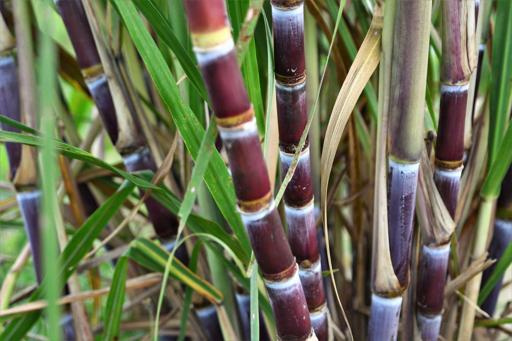Sugarcane
Saccharum officinarum
Also known as: Saccharum sinense, Saccharum barberi

Growing Information
Growth Habit: Perennial
Climate Requirements: Requires warm tropical to subtropical climates with high humidity.
Soil Requirements: Prefers well-drained loamy or clayey soils with a pH of 5.0–8.5.
Water Requirements: High water requirements; requires regular irrigation.
Planting Instructions: Planted using stem cuttings, spaced 1.2–1.5 meters apart in furrows.
Harvesting Information: Harvested after 10–14 months when sugar content is at its peak.
Characteristics & Benefits
Plant Characteristics: Sugarcane is a tall, perennial grass with thick, jointed stalks rich in sucrose.
Nutrient Content: Rich in carbohydrates and natural sugars, with trace minerals.
Health Benefits: Provides quick energy, aids digestion, and contains antioxidants.
Yield Information: Average yield is around 60–80 tons per hectare.
Uses & Distribution
Culinary Uses: Used for making sugar, jaggery, and beverages like cane juice and rum.
Industrial Uses: Used in bioethanol production, paper manufacturing, and livestock feed.
Native Range: Southeast Asia and the Pacific Islands.
Current Distribution: Grown in Brazil, India, China, and tropical regions worldwide.
Pest & Disease Management
Common Pests: Sugarcane borer, termites, and white grubs.
Diseases: Red rot, smut, and mosaic virus.
IPM Practices: Use resistant varieties, biological pest control, and crop rotation.
Market Value: $150.75
Research & References
Studies and Articles: Research on high-yield sugarcane varieties and sustainable farming.
Bibliography: International Sugarcane Research Institute, 2023.
Comments
Add CommentNo comments yet. Be the first to comment!